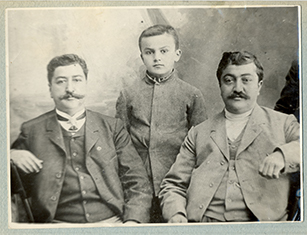
The Gevorgyan family was one of the prominent families living in the Khotorjur village group in the Kiskim district of Erzurum province.
On the eve of the Armenian Genocide there were 978 Armenian houses in 9 quarters of Khotorjur, with a population of 6,906 mostly Catholic Armenians. The Gevorgyans' grandfather, Serob (born in 1824, in Mijintagh, a village in the Khotorjur group), married Almas Kuroghlyan from Khotorjur and they had six children: two daughters, Maruz and Saner and four sons, Harutyun (1860-?), Galust (1865-1926), Hovhannes (1870-1934) and Ispiridon (1874-1939).
Galust Gevorgyan, marrying Vergine, the daughter of brother of the famous Ter Karapet Chakhalyan from Mijintagh, had six sons: Serob (1891-1948), Artashes (1894-1937), Torgom (1898-1982), Yervand (1903-1986), Manas (1903-1964) and Alexan.
The Armenian Genocide wave reached Khotorjur in May-June 1915. Of the thousands of people from Khotorjur who were driven to the deserts of Mesopotamia, only about a hundred survived. A few other people from Khotorjur also survived as they were working abroad. Among them were some members of the Gevorgyan family, who were famous bakers working in Tbilisi at that time.
Some members of the Gevorgyan family, including Maruz, Saner, Artashes' maternal grandmother Nanoz and five of uncle Ispiridon’s six children were killed during the deportation on the road from Khotorjur to Hunur.
People from Khotorjur who survived the genocide returned to their homes in 1916 with the advance of the Russian army. With the Russian army’s retreat following the Russian revolution in October 1917 however, the people of Khotorjur were forced to emigrate for the second time.
Artashes Gevorgyan later moved to Tbilisi with his parents in July 1922.
Jemal Pasha, one of the main organizers of the Armenian Genocide, also arrived in the city at about the same time. He was assassinated there by Artashes Gevorgyan and his friends Petros Ter-Poghosyan and Stepan Tsaghikyan on July 21, 1922, at about 22:00 hours.
Some of the Gevorgyans, including Hakob, Artashes, Serob and Torgom, who had migrated to Tbilisi, were repatriated to Soviet Armenia in 1924.
Artashes Gevorgyan managed, in 1925, to get the consent of the government of Soviet Armenia to establish a village called Nor Khotorjur in the motherland for the people of Khotorjur living in the Donbas. It was created in a half-ruined place called Gorukh-Gyune, on a 720 hectares area near Nerkin Akhta (currently in the Kotayk region, near the village of Hankavan in the Republic of Armenia). The Khotorjur community formed the first collective farm in Armenia. Deportees from Khotorjur, settled there from different places, elected Artashes Gevorgyan as the chairman of the community during their first meeting.
Axel Bakunts, the famous prose writer, literary critic, screenwriter, translator and agriculturist, who was a devoted friend of the community, spent many days there giving them encouragement. One of Bakunts’ works, "The Community of Khotorjur" was dedicated to this community.
Artashes Gevorgyan, however, like many others, fell victim to Stalinist repression in 1936. He was arrested and was shot on the night of August 14, 1937. He was posthumously rehabilitated in 1956.
The book "The Assassination of Jemal Pasha" was written by Artashes' brother Torgom Gevorgyan (Azvin).
Yervand Gevorgyan wrote the story of his family at a mature age, in the 1970s. This narrative was handed over to the Armenian Genocide Museum-Institute by his granddaughter Vergine Gevorgyan. In his memoirs Yervand writes: “My mother used to say,
"Do not believe the Turks and, even if they become bridge for seven years, do not cross it…."
The descendants of the Gevorgyans family currently live in the Republic of Armenia, in the Russian Federation and in the United States.
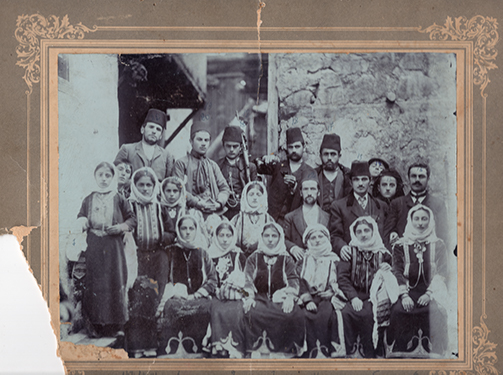 A group of Khotorjur residents on Serob Gevorgyan's engagement day, Khotorjur, 1900s. The third from left in the top row is Artashes Gevorgyan.
A group of Khotorjur residents on Serob Gevorgyan's engagement day, Khotorjur, 1900s. The third from left in the top row is Artashes Gevorgyan.
Armenian Genocide Museum-Institute
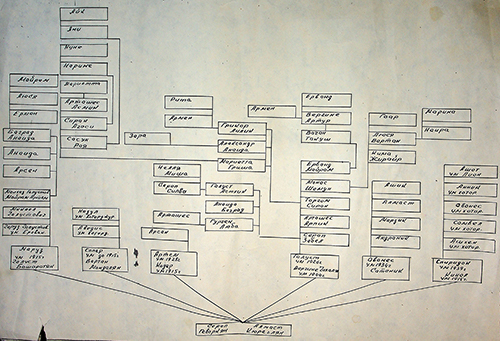 The Gevorgyans family tree
The Gevorgyans family tree
Armenian Genocide Museum-Institute
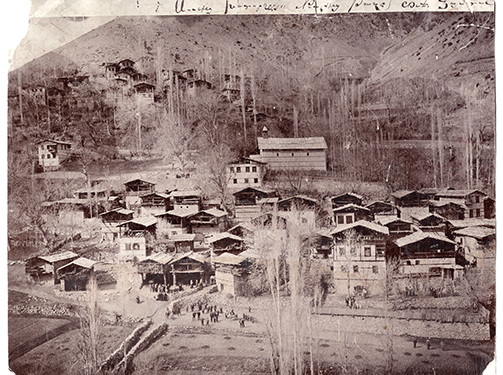 Panoramic view of Khotorjur, 1900s
Panoramic view of Khotorjur, 1900s
Gevorgyan family archives
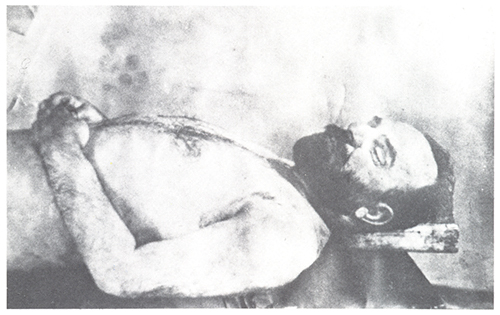 The corpse of Jemal Pasha, one of the organizers of the Armenian Genocide
The corpse of Jemal Pasha, one of the organizers of the Armenian Genocide





